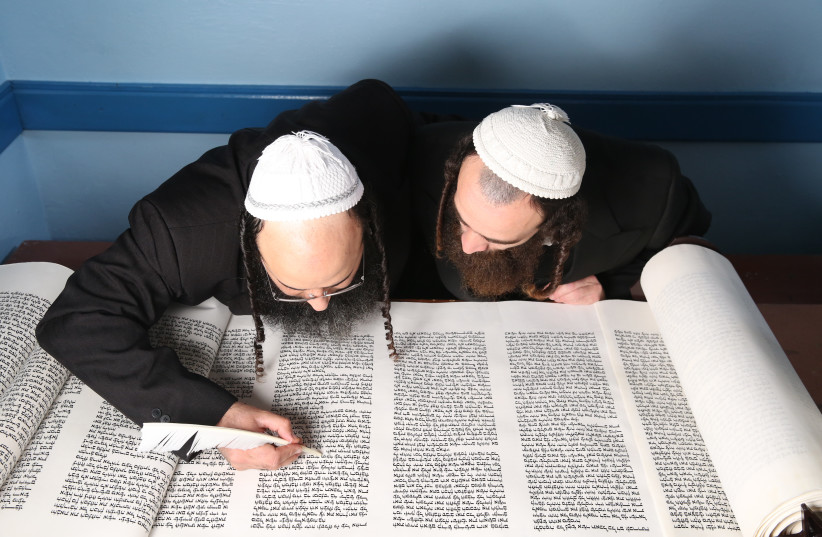Many would say the most famous tree in the Bible is the Garden of Eden’s tree of knowledge of good and bad.
Perhaps the most important tree is the acacia/etz shita. It is mentioned 29 times in the books of Exodus, Deuteronomy, Isaiah and Joel, with most of the references related to the building of the Mishkan – the place of God’s dwelling among the Children of Israel during the decades in the desert (Exodus 25:8).
In the construction of the Mishkan, acacia wood was paramount. It was used in numerous ways that are spelled out in this week’s Torah portion, Terumah: for the ark (Exodus 25:10); the poles for the table (Exodus 25:28); the beams for the Mishkan (Exodus 26:15) and the screen (Exodus 26:37); the olah altar (Exodus 27:1); and the poles for the altar (Exodus 27:6).
The great Torah commentator Rashi (1040-1105), who lived in Troyes, France, some 100 miles east of Paris, found it perplexing that trees could grow in the desert. He writes:
“‘And shittim wood’ (Exodus 25:5) – But from where did they get this in the wilderness? Rabbi Tanhuma explained it thus: Our father Jacob foresaw by the gift of the Holy Spirit that Israel would build a Tabernacle in the wilderness. He therefore brought trees to Egypt and planted them there, and instructed they be used during the Exodus.”

We find a similar midrash (Genesis Rabbah 94:4), which relates Rabbi Levi’s teaching that the Children of Israel took trees they cut down in Magdala of the dyers near Tiberias and brought them to Egypt, and they were eventually used during the Exodus for the construction of the Mishkan.
The midrash also states “that no knot or crack was found in them.” In addition, there is a specific reference in that midrash to acacia trees that grew there, and which were used for the construction of the ark.
We can understand that Rashi, who lived in a city in Europe and who had never been to Israel, did not know that there could be a rich ecosystem, including trees, in the desert. What is interesting is that he quotes Rabbi Tanhuma (whom Rashi often cites in commentaries), who lived in the fourth century on the eastern side of the Jordan River, and who, while living in the region, clearly did not understand how a desert functions.
“Several species of acacia were common and accessible on the Sinai Peninsula,” Michael Schlesinger and Catherine Walters point out in their essay “A Tree Suitable for God’s Presence,” “but only Acacia raddiana is suitable for construction.
“This thorny tree has an impressive umbrella shape: a single trunk with a broad and flat crown. The bark is brown-reddish, and the leaves are small, to conserve water. Highly resistant to drought, it grows deep roots and uses water stores that other plants cannot reach.
“Because the tree grows slowly, the wood is hard and dense, resistant to water and insect damage. Acacia wood is beautiful and nearly indestructible, well-suited for carrying the Mishkan as the Israelites sojourned in the wilderness and moved on into Canaan.”
Within the southern Arava, through which, according to the Torah, Moses led the Children of Israel en route to the Promised Land, the acacia tree to this day is the keystone to its ecosystem. It provides shade, food and protection for the birds, insects and animals of the region.
The Acacia tortilis trees of the Arava do not flower during the months when it rains – October to February – but flower during the extremely hot and dry summer. This is because it evolved out of the East African savanna, where in the summer it rains – an interesting parallel to humans who, when they emigrate, hold on to customs and traditions from where they came.
During the latter period of the Judges (I Samuel 5), the ark was captured by the Philistines, who then returned it to Israel after it brought them bad luck.
In the Talmud (Avoda Zara 24b), there is a discussion about which song was sung by the Israelites when the ark was returned: “Rabbi Yitzhak Nappaha says: They did not recite a verse found in the Bible, but, rather, the following song: ‘Sing, sing, acacia; ascend in all your glory; overlaid with golden embroidery, exalted by the Book of the palace, and magnificent with jewels.’”
The song alludes to the Ark of the Covenant, which was made of acacia wood and covered with gold. The expression “Book of the palace” is a reference to the Torah scroll that was placed in the ark.
The Talmud continues, “Rav Ashi connected this statement of Rabbi Yitzhak with the following: “And it came to pass, when the ark set forward, that Moses said: Rise up, O Lord” (Numbers 10:35),” which is sung when we take the Torah out of the synagogue ark. The Talmud asks: “What did the Jewish people recite at this juncture? Rabbi Yitzhak says they recited: Sing, sing, acacia, ascend in all your glory; overlaid with golden embroidery, exalted by the book of the palace, and magnificent with jewels.”
We note that as the acacia tree can be the keystone to certain ecosystems, the Torah is the keystone to the Jewish people. So it is not surprising that the Ark of the Covenant, constructed from acacia wood, housed the Torah.
Today we place Torahs in the ark of the synagogue. Perhaps we should consider adding words in praise of the acacia tree when we take the Torah from the ark.
The writer is rabbi emeritus of the Israel Congregation, Manchester Center, Vermont, and a faculty member of the Arava Institute for Environmental Studies and Bennington College.
